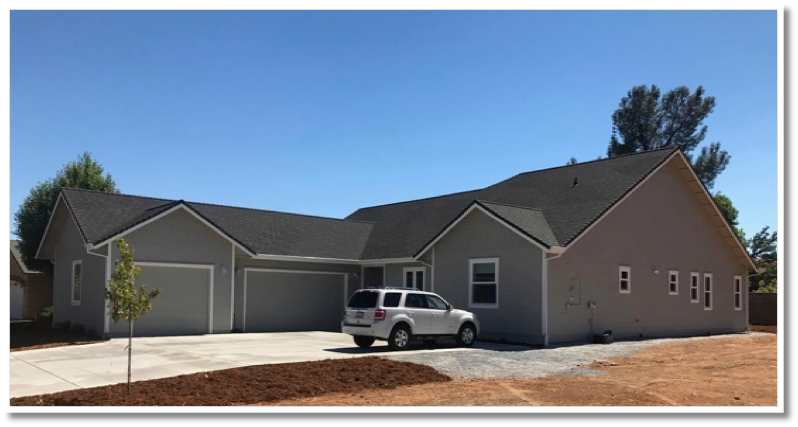 Project Title
Project Title
PG&E Residential Code Readiness Project: Redding Home Site Monitoring Report
Project Number Codes and Standards PGE 2018_2 Organization PG&E Sector Residential Project Year(s) 2016 - N/APG&E’s code readiness subprogram strives to collect data on measures and technologies that will support more robust advocacy in future code cycles rulemakings as well as inform voluntary energy efficiency programs. Additionally, by encouraging residential builders and commercial building owners or developers to enlist in this effort, participants gain first-hand experience with installation, code compliance, and performance characteristics of these advanced measures.
For this Code Readiness residential project located in Redding, CA, the primary objectives of the project were to:
- assess the performance of an ultra-efficient all-electric building design implemented by a leading high performance home contractor,
- assess builder response to the installed measures (costs, installation issues),
- document commissioning data,
- report on full year occupied home monitored energy use by end use, and
- compare annual energy end uses to compliance model projections.
Installed measures in the 2,372 ft2 single-story home included:
- High performance exterior walls: 2x6 framing, 24” o.c. (10% framing factor target); blown cellulose in cavity; R-13 rigid exterior insulation (~R-30 wall).
- Thermal envelope air sealing: High attention to detail with continuous plywood wall sheathing, taped & sealed air barrier, caulked and foamed. Leakage target of 0.45 ACH50.
- Attic insulation: R-60 ceiling insulation with radiant barrier; energy heel truss design.
- Slab edge insulation: 2” Roxul rock wool continuous slab edge perimeter insulation (R-8 insulation level).
- Efficient windows, low glazing area: low glazing area (10% of floor area) with U values ranging from 0.23-0.25, and SHGC from 0.20-0.30.
- Mechanical space within conditioned space: HVAC equipment, all ducts, and water heating storage tank located in 570 ft2 attic mechanical space in the thermal boundary.
- HVAC equipment: ¾ ton ducted mini-split heat pump with short, low static pressure ducts located in conditioned mechanical space (equipment sizing at 3,160 ft2/ton)
- Water heating: 1.25 ton CO2 HPWH (2.65 EF rating); split system with storage tank located in 2nd floor mechanical space to minimize piping run lengths to use points
- Other: Heat recovery mechanical ventilation, all-electric efficient appliances including induction cooktop and heat pump clothes dryer, all LED lighting
The builder spent approximately $50,000 (including $10,500 for 5.32 kWdc of PV) over what might be considered typical construction practices. The PG&E Code Readiness project supported the construction effort to a level of $18,500.
Results
Monitored electrical consumption over the year (July 2017 – June 2018) in the hot Redding climate totaled 5,085 kWh and was dominated by cooling (33% of annual total) and appliances (21% of annual total). PV production for the year totaled 8,032 kWh, far exceeding consumption. Future use of an electric vehicle should easily be accommodated by the excess production.
Despite the extreme 70°F cooling setpoints selected by the occupants (8-10°F lower setpoint than assumed by the compliance model), indoor conditions were maintained within ±3 °F of setpoint for the full duration of the monitoring period. This result is notable given the 3,160 ft2/ton HVAC system sizing. On a whole house basis, the model overpredicted actual monitored consumption by 55%.
Key Project Takeaways
The builder was pleased with the outcome of the construction process and building performance but was frustrated with lack of appraisers willingness to recognize the value associated with the exceptional construction methods and features of the home.
This project presents a robust case for what can be accomplished in high performance residential construction with thoughtful climate-specific design, careful engineering, and exemplary construction practices and system commissioning. Translating all these elements to the mainstream construction industry is not a simple process. Some of the measures are not viable from a builder cost-effectiveness mentality. Aggressive HVAC equipment sizing to the extent implemented in this project is also not realistic for a production builder who must rely on multiple trades doing all facets of their work properly to achieve the level of downsizing in this project. This project serves as a valuable example of what can be achieved in cutting edge high-performance residential construction.
